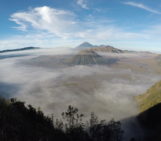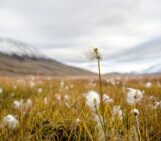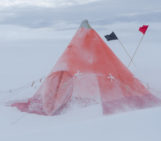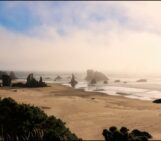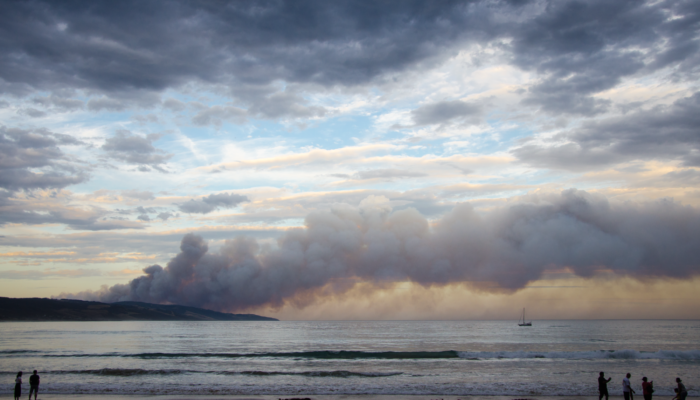
Bushfires in Australia are frequent in the hot and dry months characteristic of its climate. Their severity and seasonality is affected by climate change, and they impact extensive areas every year.
At first sight, they might look harmful and dangerous, since they can cause property damage and loss of human life. However, the natural ecosystem has developed different strategies to either resist or promote bushfires. In order to survive, plants have evolved seeds and shoots able to sprout after a fire, while eucalyptus trees promote bushfires with the flammable oils contained in their leaves, as a way to eliminate competition. Hence, vegetation and fire events are essentially interwoven.
The picture shows the smoke rising from a devastating wildfire (that developed last year on Christmas day along the Great Ocean Road) mixing with light at sunset, as seen from the nearby Apollo Bay. More than 2000 hectares were blazed by the bushfire, while citizens and tourists were evacuated.
Description by Beniamino Abis, after the description on imaggeo.egu.eu.
Imaggeo is the EGU’s online open access geosciences image repository. All geoscientists (and others) can submit their photographs and videos to this repository and, since it is open access, these images can be used for free by scientists for their presentations or publications, by educators and the general public, and some images can even be used freely for commercial purposes. Photographers also retain full rights of use, as Imaggeo images are licensed and distributed by the EGU under a Creative Commons licence. Submit your photos at http://imaggeo.egu.eu/upload/.

